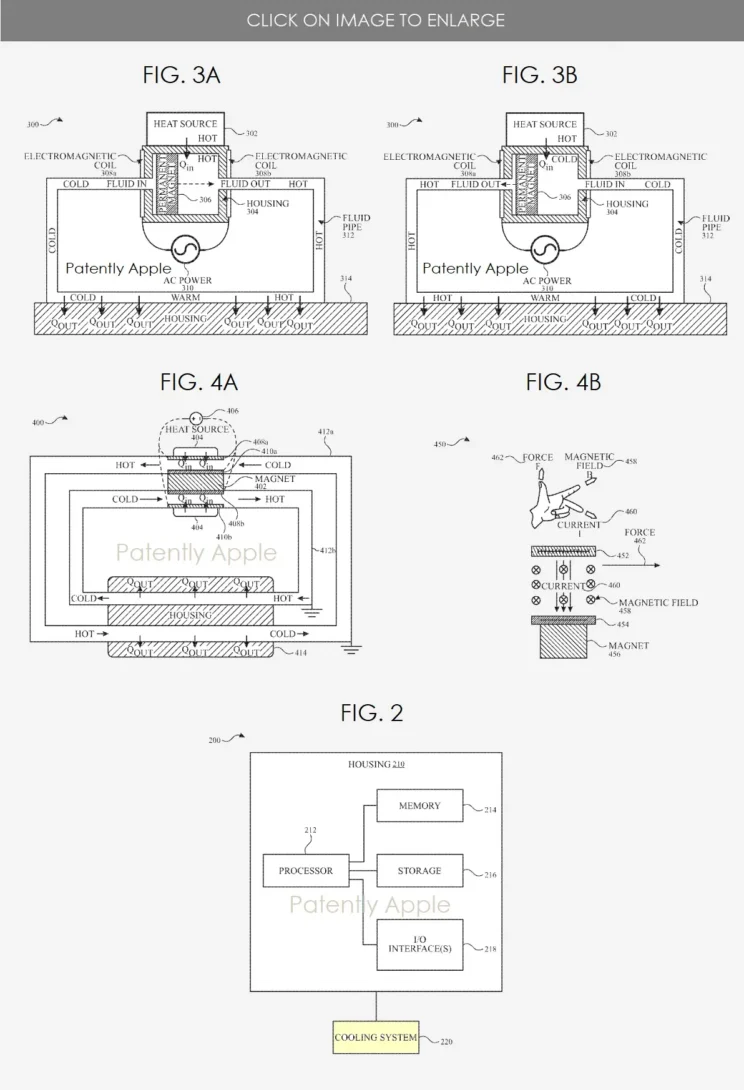According to new findings published by China’s IT Home, Samsung Galaxy S23 Ultra has shown better GPU performance compared to the iPhone 15 Pro Max in 3DMark Wildlife Extreme benchmark tests. The results highlight that despite Apple’s A17 Pro chip being manufactured using the latest 3nm process, users may experience a drop in frame rate during gaming activities. These issues have been attributed to the A17 Pro’s low energy efficiency and lack of an adequate cooling system, leading to the device overheating more quickly.
While Samsung seems to have an edge in GPU performance, Apple has been granted a patent for a new kind of heat exchanger that could significantly improve the cooling system in future iPhone models. Officially granted today by the U.S. Patent and Trademark Office, the heat exchanger uses a magnet to circulate cooling fluid, a technology that has not been made public until now.
This patented system comprises an electronic device paired with a cooling system. Within the cooling mechanism is a magnetic piston situated in a piston housing, which is fluidly coupled to a pipe containing a fluid such as water. The system could also include one or more electromagnetic coils connected to a power supply to create a magnetic field. This field would cause the magnetic piston to move within its housing, thereby circulating the fluid. In this way, heat can be transferred between components of the electronic device.
The cooling system could also incorporate Lorentz force to circulate a conductive cooling fluid. This force is generated by a magnet, electrodes, and a DC power supply situated near pipes containing the cooling fluid. These elements work together to circulate the fluid within the pipe, thereby facilitating heat transfer between the device components.
Apple’s move towards enhanced cooling technology comes at a time when performance in extended usage scenarios, such as gaming, has become a key differentiator in the smartphone market. Given the newly granted patent, it remains to be seen how quickly Apple will implement this technology to address the heating issues reported in its current models.

